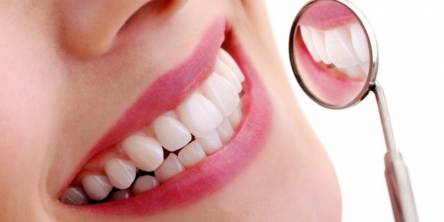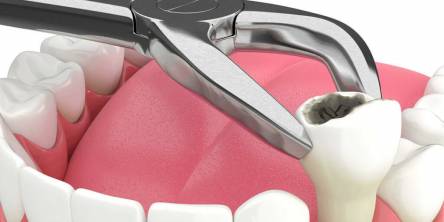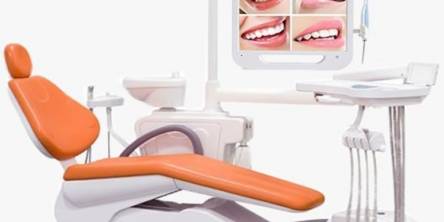Your Comprehensive Guide To A Straighter Smile
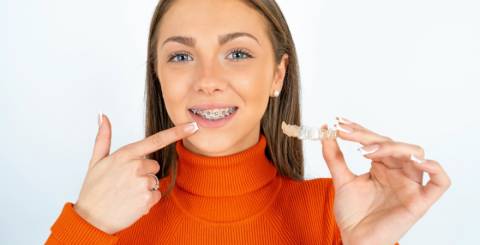
Have you ever wondered how orthodontic treatment has evolved over the years? Are you curious about the latest innovations in teeth straightening technology? Have you heard about Invisalign but aren't quite sure how it works or if it's right for you? If you've found yourself pondering these questions, you're not alone. The world of orthodontics has undergone a revolutionary transformation in recent decades, and Invisalign has emerged as a game-changing alternative to traditional braces.
For generations, metal braces were the go-to solution for correcting misaligned teeth and improving smiles. While effective, they often came with a host of challenges, including dietary restrictions, difficulty in maintaining oral hygiene, and aesthetic concerns. Enter Invisalign – a cutting-edge approach to orthodontic treatment that has taken the dental world by storm. This innovative system uses clear, removable aligners to gradually shift teeth into their desired positions, offering a more discreet and flexible option for patients seeking straighter smiles.
In this comprehensive guide, we'll delve deep into the world of Invisalign, exploring its history, mechanics, benefits, and potential drawbacks. We'll walk you through the entire Invisalign journey, from your initial consultation to the final reveal of your new smile. Whether you're considering Invisalign for yourself or simply interested in learning about this groundbreaking orthodontic technology, this article will provide you with a wealth of information to help you make informed decisions about your oral health. So, let's embark on this exciting exploration of Invisalign and discover how it's revolutionizing the way we approach teeth straightening.
Understanding Invisalign: The Basics
At its core, Invisalign is an orthodontic treatment system that uses a series of clear, custom-made aligners to gradually move teeth into their desired positions. Unlike traditional braces, which use metal brackets and wires, Invisalign aligners are virtually invisible, making them a popular choice for adults and teens who want to straighten their teeth without drawing attention to their orthodontic treatment.
The Invisalign system was developed in the late 1990s by Align Technology, a company founded by Zia Chishti and Kelsey Wirth. The idea was born out of Chishti's own experience with adult orthodontics and his desire to create a more aesthetically pleasing alternative to metal braces. Since its introduction to the market in 1999, Invisalign has transformed millions of smiles worldwide and continues to evolve with new technological advancements.
One of the key differences between Invisalign and traditional braces is the level of flexibility and convenience it offers patients. Invisalign aligners are removable, permitting wearers to take them out for eating, drinking, brushing, and flossing. This not only makes maintaining oral hygiene easier but also eliminates many of the dietary restrictions associated with traditional braces. Additionally, the smooth, plastic material of the aligners is generally more comfortable than metal brackets and wires, reducing the likelihood of mouth irritation and soreness.
The Invisalign Journey: From Consultation To Completion
Initial Consultation
Your Invisalign venture starts with an underlying discussion with a certified Invisalign supplier. During this appointment, your dentist or orthodontist will evaluate your teeth and discuss your smile goals. They will determine if Invisalign is the right treatment option for you and explain the process in detail. This is likewise a chance for you to clarify some pressing issues and address any worries you might have about the treatment.
Choosing the right Invisalign provider is crucial for ensuring the best possible outcome. Look for a dentist or orthodontist who has extensive experience with Invisalign treatments and has achieved a high level of certification, such as Invisalign Diamond or Platinum provider status. These designations indicate that the provider has successfully treated a significant number of cases and stays up-to-date with the latest Invisalign techniques and technologies.
3D Scanning and Treatment Planning
If you decide to proceed with Invisalign, the next step involves creating a digital 3D model of your teeth. This is typically done using an iTero scanner, which captures detailed images of your teeth and gums without the need for messy impressions. The scanning process is quick, comfortable, and provides highly accurate data for treatment planning.
Using the 3D scans, your Invisalign provider will create a customized treatment plan that maps out the movement of your teeth from their current positions to their desired final positions. This plan is created using Invisalign's proprietary ClinCheck software, which allows your provider to visualize and adjust your treatment before it even begins. You'll be able to see a virtual representation of how your teeth will move throughout the treatment process, giving you a clear picture of what to expect.
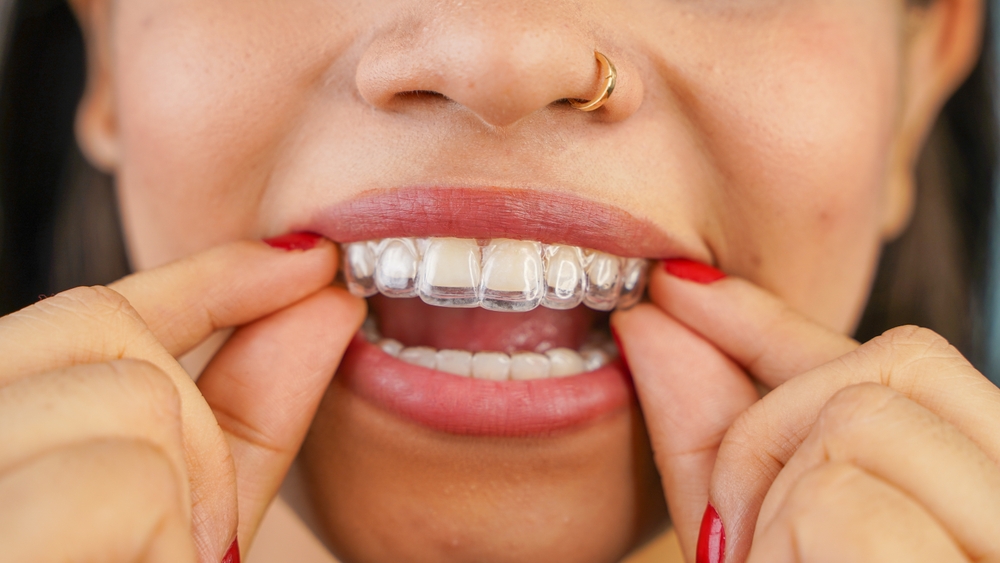
The Invisalign Experience: Day-To-Day Living
Wearing and caring for your Invisalign aligners is a crucial part of ensuring successful treatment. For optimal results, you should wear your aligners for 20-22 hours per day, removing them only for eating, drinking (except for water), brushing, and flossing. This consistent wear allows for steady, controlled tooth movement and helps you stay on track with your treatment timeline.
Cleaning your aligners is simple but important. Rinse them with lukewarm water every time you remove them, and brush them gently with a soft-bristled toothbrush at least once a day. Try not to utilize heated water, as it can twist the plastic. You can use the Invisalign cleaning system or a mild antibacterial soap to keep your aligners fresh and clear. Never use toothpaste to clean your aligners, as it can be abrasive and cause scratches that make the aligners more visible.
One of the biggest advantages of Invisalign is the ability to eat and drink normally during treatment. Simply remove your aligners before meals and snacks, and remember to brush your teeth before putting them back in. This flexibility allows you to enjoy all your favorite foods without the restrictions typically associated with traditional braces. However, it's important to maintain good oral hygiene habits throughout your treatment to prevent cavities and ensure the best possible results.
The Science Behind Invisalign
Invisalign works by applying gentle, constant pressure to your teeth, gradually moving them into their desired positions. Each set of aligners is designed to make slight adjustments to the position of your teeth, typically moving them by 0.25 to 0.3 millimeters. You'll wear each arrangement of aligners for around one to about fourteen days prior to continuing on toward the following set in the series.
To enhance the effectiveness of Invisalign treatment, your provider may recommend the use of SmartForce attachments. These small, tooth-colored shapes are bonded to specific teeth and act as anchor points, allowing the aligners to exert more precise forces on certain teeth. In some cases, elastic bands may also be used in conjunction with Invisalign to address more complex orthodontic issues, such as bite correction.
Invisalign aligners are made from a proprietary material called SmartTrack, which was developed specifically for orthodontic use. This flexible, transparent plastic is designed to provide consistent, gentle force and improved control of tooth movements. SmartTrack material also enhances the comfort of the aligners and makes them easier to put on and take off compared to previous aligner materials.

Invisalign Vs. Traditional Braces: A Comprehensive Comparison
When considering orthodontic treatment, many patients find themselves weighing the pros and cons of Invisalign versus traditional braces. One of the main benefits of Invisalign is its stylish allure. The clear aligners are virtually invisible, making them an attractive option for adults and teens who are self-conscious about wearing braces. Traditional metal braces, while effective, are much more noticeable and can impact a person's confidence, especially in professional or social settings.
In terms of comfort and convenience, Invisalign often has the upper hand. The smooth plastic aligners are generally more comfortable than metal brackets and wires, which can cause irritation to the lips and cheeks. Additionally, the ability to remove Invisalign aligners for eating and oral hygiene routines offers a level of flexibility that traditional braces can't match. However, this removability also requires a higher level of patient compliance to ensure effective treatment.
When it comes to treatment efficacy, both Invisalign and traditional braces can effectively address a wide range of orthodontic issues. However, very complex cases may still require traditional braces or a combination of treatments. It's important to consult with a qualified orthodontist to determine which option is best suited for your specific needs. In terms of cost, Invisalign is often comparable to traditional braces, though prices can vary depending on the complexity of the case and the duration of treatment. Many dental insurance plans that cover orthodontics will provide coverage for Invisalign, but it's always best to check with your insurance provider for specific details.
Real Patient Stories: Invisalign Transformations
Nothing speaks louder than real-life experiences when it comes to understanding the impact of Invisalign treatment. Many patients report not only improved smiles but also increased confidence and overall satisfaction with their appearance. Take Sarah, a 32-year-old professional who had always been self-conscious about her crooked teeth.
Similar Articles
Temporomandibular Joint Disorder, commonly known as TMJ, is a condition that causes pain and dysfunction in the jaw joint and surrounding muscles. This disorder can arise from various factors, including teeth grinding, arthritis, jaw injuries, poor posture, or stress.
A root canal is a common treatment that people pay the dentist a visit for. According to a study, root canal treatment claims were up by 42% in the last five years.
Family dentistry isn’t just about teeth—it’s about bringing convenience, care, and a few laughs to your household’s dental game. Think of a family dentist as the Swiss Army knife of oral healthcare, equipped to handle everything from baby teeth to grandma’s bridgework.
Early identification of dental decay is critical. It can aid your dentist in reversing the problem by administering proper therapy. However, the early stages of tooth decay are almost impossible to detect with the human eye.
Cosmetic dentistry is a branch of dental practice that focuses on improving the appearance of teeth, smiles, and overall oral health. This field of dentistry has grown significantly over the past few decades and offers patients a wide variety of procedures to address a wide variety of cosmetic issues.
Ah, the bittersweet moment when a tooth has overstayed its welcome. It’s been with you through thick and thin—chewing your favorite snacks, smiling in photos, and grinding during those stressful nights. But now, it’s time to part ways
Learn 5 signs you may need dentures and discover the steps to get started for a healthier smile and improved quality of life.
Boost patient trust and diagnostic accuracy with high-quality intraoral cameras. Enhance care, improve communication, and streamline operations in your dental practice!
Imagine this: You just walked out of the dentist's office after your laser gum contouring procedure, and your smile is on the verge of greatness: no more gummy grins or uneven gum lines. You’re practically ready to hit the red carpet. But hold up — what happens next? How fast can you expect to heal after your gums get their laser makeover?





